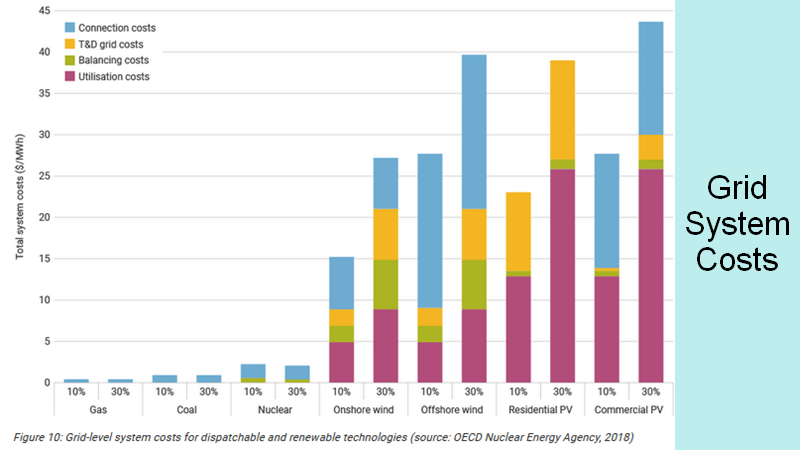
I tried to answer the arguments against nuclear power in the talks I gave to my local U3A group. I will continue to provide the same material in this series of blogs. I continue to learn more and more about the issues each day and will present some of this information when I have finally finished posting the talks.

The numbers I have seen on the cost of electricity generated by nuclear power plants vary considerably. Conservative estimates are based on the last few nuclear power stations built in Europe and the U.S. Few had been built for nearly 30 years and the costs blew out for several reasons. Firstly, nobody had built one before and it was a learning curve for the engineers. Secondly, regulatory authorities often required small changes in design which held up the works. Lastly, expensive court cases created by antinuclear groups held up the works. These days, every material used in the main parts of the power plants are tested by regulators in special facilities to ensure they won’t break down under extreme conditions. Some of the engineers in the industry believe that the pendulum has swung too far. Every safety element, pump, backup generator et cetera must be triplicated and must work by a different principle. Finland’s latest nuclear reactor which has just come into operation took a long time to build and the cost blew out to $10 billion dollars. It is often used to claim nuclear power is too costly and takes too long to build.
I note that Snowy 2.0 has also blown out to 10 billion dollars and will probably only provide far less electricity than the originally estimated 2000 MW.
France had some of the cheapest power in Europe for a long time. They built the same design of nuclear power plant repeatedly and the price came down as might be expected. It is always more expensive to build a prototype.
In China, however, nuclear power stations are now being built in 36 months or less. They are building several different designs but as each type of station is built again both the cost and the building time has reduced.

I may be wrong, but I note that comparisons between nuclear, renewables and fossil fuel electricity costs rarely take all associated costs into consideration. Extras such as battery or other backup storage, disposal costs, recycling costs, grid costs, loss of arable land and forest, government subsidies, and tax breaks don’t seem to be considered. Lifespan of a facility is usually included but I note that assumptions like nuclear power plants only operate for 40 years is a gross underestimate.

Items mostly left out of the cost comparisons are related to grid system costs.

There are many claims that 100% renewable energy is possible for all countries. The only countries to reach this target have a high percentage of hydro or easy to obtain geothermal power such as Iceland, Norway, and Uruguay.

It may be that modern IT and special algorithms can solve the problems of grid instability, but I see many practical challenges that will need to be solved.